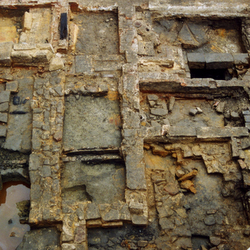 |
 |
ARCHAEOLOGICAL INVESTIGATION
CRM has in Wendy Thorp one of the most highly experienced excavation directors of historical archaeology in Australia. We have undertaken some of the most significant archaeological projects over the last few decades including the largest historical archaeological excavation undertaken in Australia to date. Archaeological investigation means uncovering the material remains of past occupation and documenting it. The purpose, in the first instance, is to ensure that information preserved in the ground that will be damaged or removed by development is transferred to permanent archives by means of plans, photographs and other stable and accessible formats. Secondly, archaeological investigations are required to identify particular issues that have relevance to the bigger questions we are asking about our past and our settlement. Each site can reveal information that will add to the big picture of Australia’s development. The anaylsis and presentation of the evidence recovered from an archaeological site is critical to the completion of the work. An archaeological investigation is usually initiated when an assessment identifies that a site is likely to contain archaeological material that is of sufficient importance that time and resources must be invested in it to ensure that the information contained there is not lost. Several options can be recommended for archaeological investigation depending on the scale, significance and integrity of what remains in the ground.
Whatever form of on-site management is required for an historic site an application for an Excavation Permit must be made to the Heritage Council of NSW. All archaeological relics in NSW have protection under provisions of the NSW Heritage Act (1977). CRM offers a full service of statutory application and on site investigation and can advise where exemptions may be applicable and where issues of in situ conservation may arise. CRM has a perfect record in statutory application. We have extensive exerience in the requirements of public interaction with sites during their excavation. We also offer advice and management of indigenous archaeological sites. Examples of archaeological investigations undertaken by CRM include: Hyde Park Barracks & the Royal Mint, Sydney (Department of Public Works 1980-1981) Hawkesbury Hospital, former Convict Barracks (Hawkesbury City Council 2003) The KENS Site, Sydney (Leighton Properties Pty Ltd. 2004).
|











